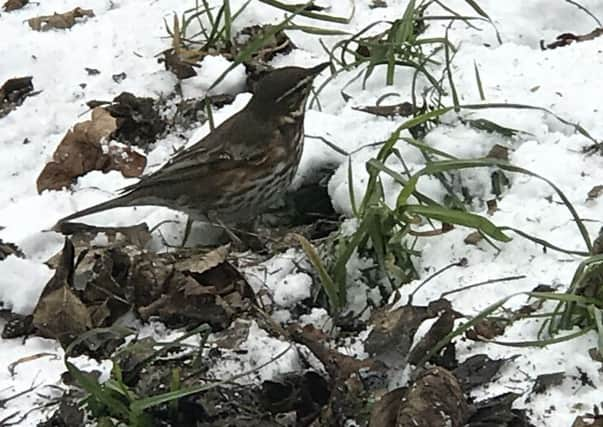Ilona Amos: How birds reacted to the Beast from the East


The so-called Beast from the East brought severe weather conditions to the UK, the like of which we have not seen in years. Roads, railways and airports ground to a halt and schools were closed as blizzards swept across the country. People were stranded on motorways and cut off in their homes as supermarket shelves were left bare of bread, milk, veg and meat as panic-buying set in and stock deliveries failed to get through to replenish supplies.
The unprecedented chill is a result of a cold front moving in from Russia to occupy much of Europe. This was driven by a freak heatwave in the Arctic, known as sudden stratospheric warming, that has seen temperatures as much as 30 degrees Celsius higher than average for the time of year. Worryingly, scientists fear the impact of climate change could see an increase in such unusual weather.
Advertisement
Hide AdAdvertisement
Hide AdBut it’s not just people who have been upset by the recent whiteout at home. Much of our wildlife has been struggling to cope with the havoc. There have been apocalyptic scenes around the coasts of England, where huge numbers of sea creatures such as starfish and lobsters have washed up dead after storms out at sea. The situation has been rather less dramatic, but still tough, for our avian community, with many birds being forced to explore new territories in search of vital sustenance.
Over the past few days there has been a major surge in sightings of red wings and fieldfares in gardens and parks across the country, as they desperately try to scrape out some much needed food while snow blankets their usual foraging grounds.
Massive numbers of the birds – an estimated 8.6 million red wings and 680,000 fieldfares – fly across the North Sea from Scandinavia and Russia each year to spend winter here, before heading back where they came from in spring. They usually spend their time in fields and hedgerows, feeding on fruits and berries, and are rarely seen in places where there’s a lot of human activity.
However, the heavy snow dumped by the Beast has driven flocks of the hungry birds to seek out more accessible food supplies, seemingly unperturbed by passersby. I’ve been lucky enough to witness such a spectacle in Edinburgh’s London Road gardens, where hundreds of distinctive red wings have been seen digging through fallen leaves in search of earthworms over the past few days.
Posts on social media platforms suggest the same is happening up and down the nation as the normally shy birds put their need for food above their fear of potential predators – in my area, that means squads of raucous children making the most of school closures to fling themselves head-first down the nearest icy slope on their mother’s favourite baking tray or finest tupperware.
Thankfully things are beginning to get back to normal now. Milk is no longer worth more than gold and I’m abandoning my survival plan to stock-pile booze, chocolate and fizzy drinks – for the time being at least. But as we refill our fridges and cupboards we can also do our bit for wildlife. Conservationists at the RSPB say putting out food in our gardens provides a much-needed source of nutrition for birds, particularly at this time of year. Mixtures containing flaked maize, sunflower seeds and peanut granules are best and fat balls make excellent winter food. It’s also important to make sure there is fresh water for drinking.
